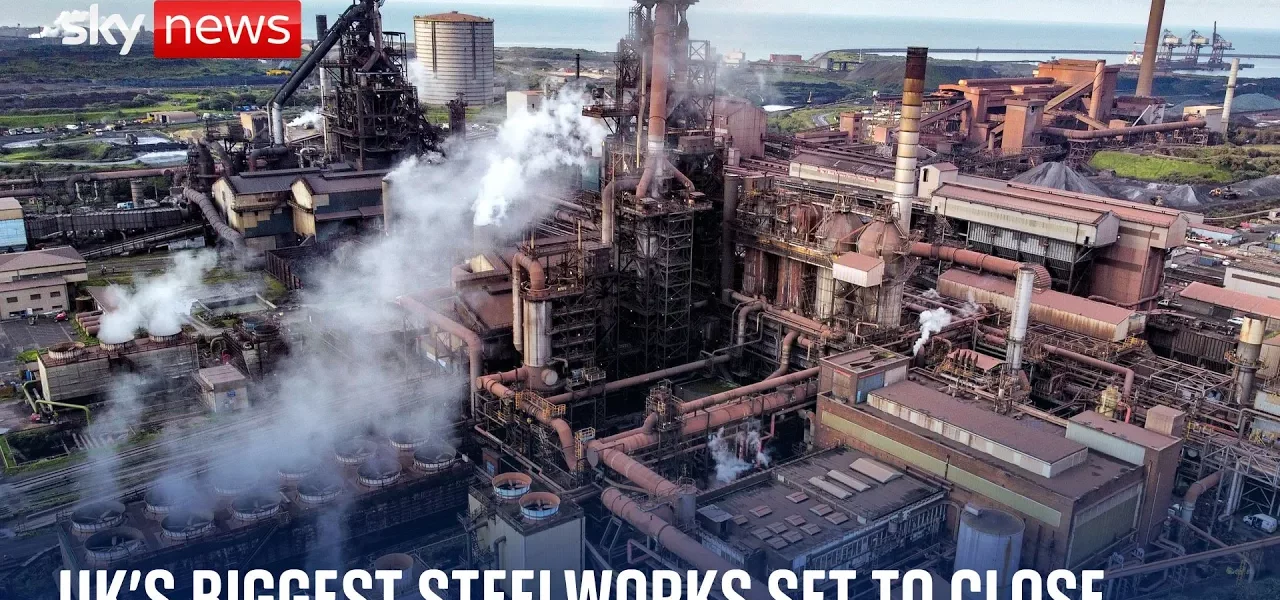Historic Closure of the UK’s Largest Steelworks and Last Coal-Fired Power Station

Today marks a significant turning point in British industrial history, with the closure of both the UK’s largest steelworks in Port Talbot and the last coal-fired power station in Ratcliffe-on-Soar. This article explores the implications of these closures on the workforce, the energy landscape, and the broader transition to renewable energy sources.
Introduction
The recent announcement regarding the closure of the Port Talbot steelworks and the Ratcliffe-on-Soar coal-fired power station represents a critical juncture in the UK’s industrial narrative. These closures not only symbolize the end of an era for traditional energy and manufacturing sectors but also highlight the ongoing transition toward a more sustainable and lower-carbon economy. With thousands of jobs at stake and significant economic repercussions, the impact of these closures will be felt across communities and industries. This article delves into the details of these closures, their causes, and the future they herald for the UK’s industrial landscape.
Port Talbot Steelworks: A Historical Overview
Port Talbot steelworks, located on the Welsh coast, has been a cornerstone of the UK’s steel production for decades. Here are some key points regarding its history and significance:
- Established in the early 20th century, it grew to become the largest steelworks in the UK.
- At its peak, it employed thousands of workers, contributing significantly to the local economy.
- The steelworks has undergone various technological changes, adapting to market demands and energy costs.
Impact of Closure on Employment
The closure of Port Talbot is expected to lead to job losses for approximately 2,800 workers, a devastating blow to the local community. The implications of these job losses include:
- Increased unemployment rates in the region.
- Economic downturn for local businesses reliant on the steelworks workforce.
- Potential for social issues, including mental health challenges and community destabilization.
The Last Coal-Fired Power Station: Ratcliffe-on-Soar
The Ratcliffe-on-Soar power station has been a significant energy provider for over 50 years. Its closure at midnight marks the end of coal as a source of electricity generation in the UK. Key points include:
- Historically, coal-powered stations supplied the majority of the UK’s electricity.
- As of today, coal still accounts for roughly a third of the global electricity supply.
- The closure reflects a global trend among developed nations to phase out high-carbon energy sources.
Transition to Renewable Energy Sources
The closure of Ratcliffe-on-Soar is part of the UK’s broader strategy to transition to renewable energy, aided by:
- The development of wind energy from the North Sea.
- Investment in solar energy and other renewable technologies.
- Government incentives and support for sustainable energy initiatives.
The Economic and Environmental Implications
While the closures signify a move towards a greener economy, they also raise concerns about economic stability and energy security:
Economic Shifts
The economic landscape in regions affected by these closures will need to adapt significantly:
- Job retraining programs will be essential for displaced workers.
- Investment in new industries will be crucial to offset job losses.
- The government must ensure that affected communities receive adequate support during the transition.
Environmental Benefits
On the environmental front, the closures are expected to yield several benefits:
- Reduction in carbon emissions associated with coal and traditional steel production.
- Promotion of cleaner energy sources contributing to climate change mitigation.
- Potential for innovation in green technologies as industries pivot.
Conclusion
The closure of Port Talbot steelworks and Ratcliffe-on-Soar power station marks a pivotal moment in the UK’s industrial evolution, reflecting the nation’s commitment to reducing carbon emissions and transitioning to sustainable energy sources. While the immediate impact on jobs and local economies is a significant concern, the long-term benefits of this transition could foster new industries and innovation. It is now imperative for the government, businesses, and communities to work together to navigate this challenging transition, ensuring that the move towards a greener economy does not come at the cost of economic stability and workforce security. For further insights on the evolving industrial landscape in the UK, be sure to check our related articles on renewable energy advancements and workforce development strategies.
“`




